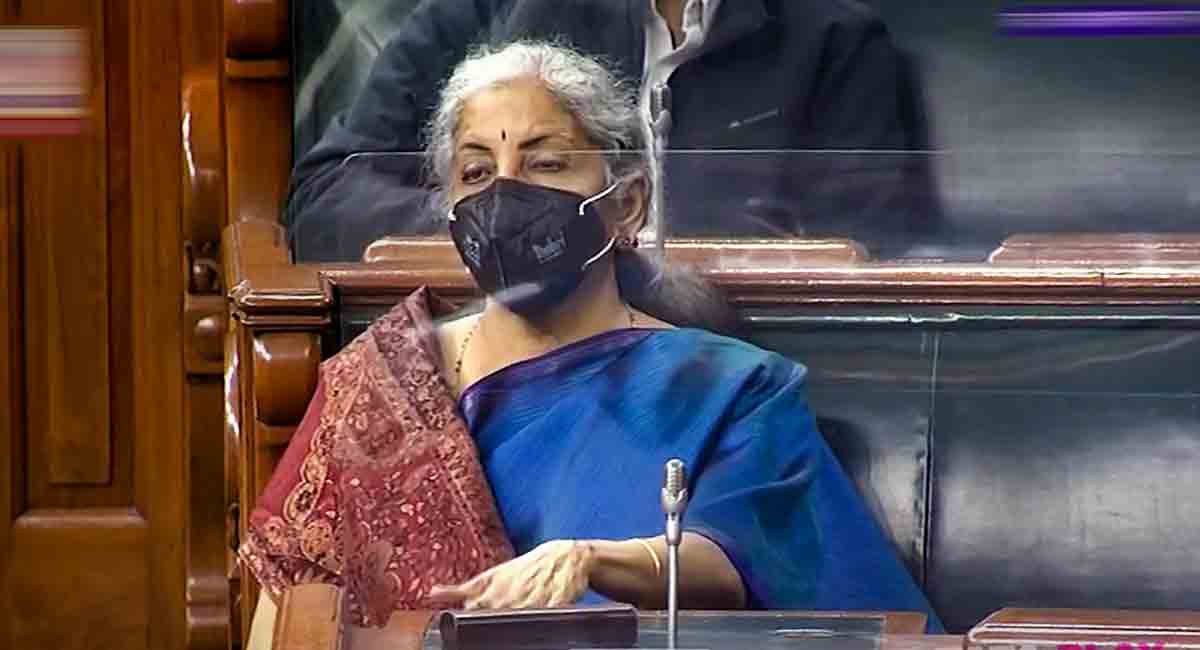NEW DELHI: India’s economic growth is expected to remain in the range of 8 to 8.5 per cent in 2022-23 as against a projected growth of 9.2 per cent in the current financial year and a sharp contraction witnessed in 2020-21, according to the Economic Survey 2021-22 tabled in the parliament on Monday.
“With the vaccination programme having covered the bulk of the population, economic momentum building back and the likely long-term benefits of supply-side reforms in the pipeline, the Indian economy is in a good position to witness GDP growth of 8.0-8.5 per cent in 2022-23,” said the annual survey report released ahead of the Union Budget.
However, the report presented in the parliament by Finance Minister Nirmala Sitharaman noted the challenges arising out of the new COVID-19 variants and uncertainties in the global economy.
“The global environment still remains uncertain. At the time of writing, a new wave in the form of the Omicron variant was sweeping across the world, inflation had jumped up in most countries, and the cycle of liquidity withdrawal was being initiated by major central banks. This is why it is especially important to look at India’s macroeconomic stability indicators and their ability to provide a buffer against the above stresses,” it said.
Overall, macro-economic stability indicators suggest that the Indian economy is well placed to take on the challenges of 2022-23, it said.
One of the reasons that the Indian economy is in a good position is its unique response strategy. Rather than pre-commit to a rigid response, the Government of India opted to use safety-nets for vulnerable sections on one hand while responding iteratively based on Bayesian-updating of information.
This “barbell strategy” was discussed in last year’s Economic Survey. A key enabler of this flexible, iterative “Agile” approach is the use of eighty High Frequency Indicators (HFIs) in an environment of extreme uncertainty.
Referring to the Advance Estimates of National Income released by the National Statistical Office (NSO), the survey said India’s Gross Domestic Product (GDP) is expected to expand by 9.2 per cent in the current financial year after contracting in 2020-21. This implies that overall economic activity has recovered past the pre-pandemic levels.
Almost all indicators show that the economic impact of the “second wave” in Q1 was much smaller than that experienced during the full lockdown phase in 2020-21 even though the health impact was more severe, it said.
Agriculture and allied sectors have been the least impacted by the pandemic and the sector is expected to grow by 3.9 per cent in 2021-22 after growing 3.6 per cent in the previous year.
Advance estimates suggest that the GVA of Industry (including mining and construction) will rise by 11.8 per cent in 2021-22 after contracting by 7 per cent in 2020- 21.
The Services sector has been the hardest hit by the pandemic, especially segments that involve human contact. This sector is estimated to grow by 8.2 per cent this financial year following last year’s 8.4 per cent contraction.
Total Consumption is estimated to have grown by 7.0 per cent in 2021-22 with significant
contributions from government spending. Similarly, Gross Fixed Capital Formation exceeded pre-pandemic levels on the back of ramped up public expenditure on infrastructure.
Exports of both goods and services have been exceptionally strong so far in 2021-22, but imports also recovered strongly with recovery in domestic demand as well as higher international commodity prices. (ANI)







